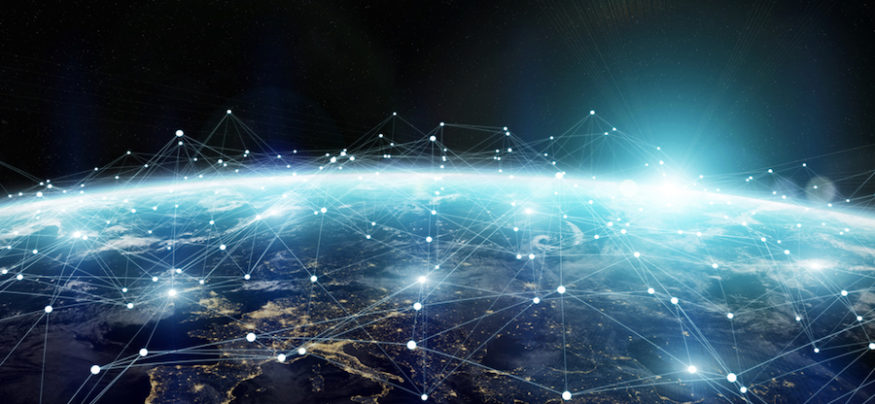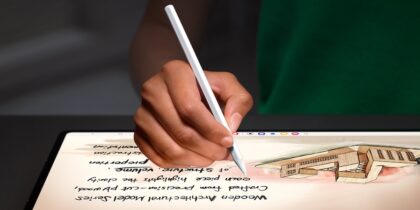No industry is safe from disruption. It’s probably already begun in yours.
Just take a look at the apps on your phone, and the way you use them. Companies have already taken enormous market share away from incumbent corporations, at a rapid pace, by leveraging mobile technology to provide convenient alternatives to customers.
Mobility has changed the way we work, and the way that businesses offer services to people. Having stepped outside the rigid IT controls and legacy systems that once bound us, or maybe even inconvenienced us, there’s no going back: We all expect consumer-like mobile experiences. At home, at the workplace, and everywhere in between.
This is nothing particularly new, of course. Ever since the spinning jenny mechanized textile manufacturing in the 18th century, technology has been revolutionizing the way we work, create and deliver products. At the expense of many a traditional business model.
A New Era of Opportunity
Today, we find ourselves in the midst of Industrial Revolution 4.0; one that has both built on the progress of previous iterations, and differentiated itself altogether. While the first two industrial revolutions were machine-driven, enabling mass production and increasing efficiency, the third began turning away from that — with automation, digitization and enhancements in data — ultimately putting more power into consumers’ hands than before. The fourth has taken all these a step further; bringing us exponential increases in computing power, connectivity and artificial intelligence (AI) that are creating new possibilities across all fields.
It is these advancements in technology, coupled with changes in consumer behavior and the ever-increasing demand for efficiency, that are characterizing our current business landscape. And priming it for even more disruption.
At Samsung, we refer to this new era of opportunity as the Next Mobile Economy.
The Building Blocks of Disruption
Mobility allows us to bring people, assets, and data together like never before. Today, mobile technology is the leading business imperative for most of the organizations that we talk to, and a catalyst for progressive business growth.
To succeed in the Next Mobile Economy, it won’t be enough to be aware of emerging trends. You’ll need to understand what you can achieve with them, so you can bring them together with your existing infrastructure in ways that are sensible — and valuable — to your customers.
We’ve identified four key technologies which we’ve come to think of as building blocks for disruption and transformation, regardless of your industry: AI, mixed reality (AR/VR), the Internet of Things (IoT) and 5G connectivity.
AI
A lot of the AI you find today is in the form of personal assistants: like Bixby, helping you keep track of your appointments or book a cab. We also see software bots that allow workflows to be completed automatically, or chatbots on 24/7 helpdesks.
At enterprise level, it’s going even beyond that. While most of the AI you’re familiar with are simply following defined decision trees, some are actually learning as they go along. And that’s where it gets interesting.
Embrace the Next Mobile Economy
Discover how to identify and address the growing tech gap between C-suite and the next generation workforce in this free report. Download Now
We are now able to tap on the contextual awareness of our devices, so that they can use the inputs they receive to make cognitive, automated decisions on our behalf. Imagine, for some reason, your phone were to become the target of a corporate rival or even a foreign government. Or that you simply end up in an unsafe network. AI can automatically detect that something is happening, and start removing assets and data from your device, or block services on it, and redeploy them at a later date. It could realize that you’re interacting with things in a way you normally wouldn’t, and challenge you for re-authentication.
We’re taking AI in the direction of replacing some of the decision-making an IT department would normally need to make, in a manner that’s more proactive. What if we could use it to free them up to do the more interesting work that they’d likely rather be doing?
Mixed Reality
Mixed reality refers to both augmented reality (AR) and virtual reality (VR). These are still in their infancy, but are already making an impact in certain business sectors. Real estate or property management firms, for example, might use VR to propagate their portfolio far beyond the confines of their physical locations. You could be in New York City, taking an extensive tour of an office in Dubai without needing to be there.
VR is also being used in employee training programs to provide richer, more interactive experiences. We’re seeing that people retain far more information via these VR scenarios than they would via more passive mediums, like slideshows, because they find themselves immersed in real-world situations. Their decisions can affect the narrative arc of the session, and they actually experience its outcomes.
In a groundbreaking new development, clinical trials are proving that VR can be an effective, non-pharmacological alternative to opioid-based pain management. Used in conjunction with wearables, the technology functions as therapy for those suffering from acute orthopedic injuries, reducing medical costs and lowering patients’ chances of developing an opioid addiction.
AR, meanwhile, is making waves in environments like precision manufacturing plants, where people rely on hands-free computing to supply information to them via smart glasses or flat screens in front of them.
Internet of Things
Business consultants Frost & Sullivan anticipate that by 2020, the average digital citizen will have access to 10 connected devices across home and the workplace. By the same year, Gartner Research expects to see at least 20 billion interconnected devices, all doing different things. And we are well on our way already.
These exist in the form of smartphones, tablets, wearables and Connected Home appliances. And both the number and variety of connected devices are exponentially increasing, across many different industries. Take, for example, sensors in our vehicles linked to Smart City grids. If you have an accident, emergency services can be auto-dispatched. Your watch, scanning your vital signs, can relay information directly to the nearest hospital. Your vehicle can start sending information to your insurance company. We’re not talking about one-to-one connections — we’re talking about the ability to connect everything, and have them talk to each other simultaneously.
5G Connectivity
Enabling all of these is 5G, which is going to be deployed commercially later this year, and expand through 2020. 5G is going to bring you a speed on wireless networks that will surpass the wired speed we have on fiber today. More importantly, you’ll enjoy near-zero latency on a 5G network, compared to the slight delays you might be experiencing today.
This will be critical to ensure that devices on our IoT networks are speaking to each other as smoothly as they need to be. If we look back on our connected car example, the sensors on these cars will need to communicate with each other at a guaranteed immediate speed, and that’s what 5G will deliver. This level of service will empower the use of remote equipment, like drones or robots, in a manufacturing facility or hospital, because we’ll be able to rely on them in ways we haven’t before.
5G will also enable network slicing, which allows us to prioritize data traffic on a network. You’ll be able to create multiple virtual networks on top of your physical one, which you can then customize to meet the specific speed and latency needs of services, applications and data packets. And give you a far more credible amount of control over your solutions.
Mobility is Critical
Mobility is evolving rapidly. It has evolved from being a mere differentiator, to a critical component of business innovation and the catalyst for change. The four emerging technologies we’ve introduced can help you drive disruption, but only if you adopt them in ways that can add value to both your infrastructure and your customers. Your greatest challenge will lie in finding ways to deploy them holistically, like pieces of the same big puzzle, instead of treating them as separate tools.
We would not want to prescribe how you should run your business or how you should disrupt your industry, but we hope these building blocks provide a significant starting point to an exciting journey ahead. And we’re looking forward to being part of that journey with you.
For more insights on transforming your organization, click here to watch our webinar, Thriving in the Next Mobile Economy: How Being Open is the Future of Your Business.









